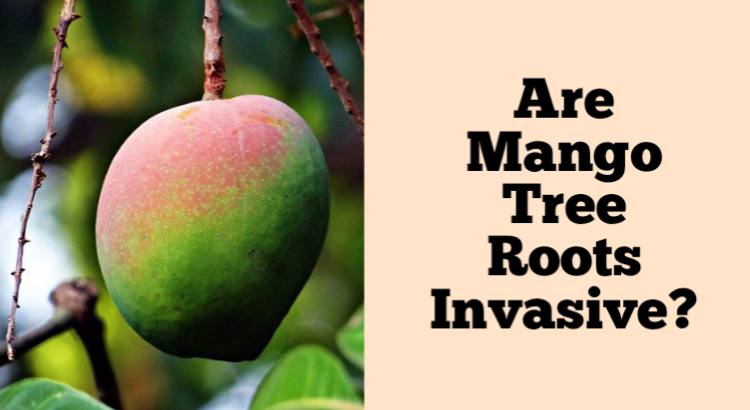Mango trees are beautiful and can be a lovely addition to any yard, but they have a reputation as being invasive. Do mango tree roots invade your home or yard? The answer depends on the type of soil in your backyard and how healthy the tree is.
Yes, the roots are invasive and aggressive.
Mango tree roots can grow to be very long, and they can penetrate through concrete and pipes with ease.
The long, deep roots of mango trees will cause damage to foundations, plumbing and sewer lines in your yard if you do not properly care for them.
Mango trees can grow to be very large, and they will outgrow their space. The roots of the mango tree will start to circle around the trunk of the tree in search of more room.
The deep, long roots of mango trees can also invade sewer lines, causing blockages. Mango trees are beautiful to look at, but they require a great deal of care and maintenance if you want them to thrive.
The mango tree is a tropical plant, so it needs warm temperatures to grow. You should be able to grow mango trees in USDA zones 9-11. If you live in an area that experiences cold winters, keep your mango tree indoors during the winter months.
Yes, mango tree roots can invade pipes and destroy concrete foundations.
When a homeowner plants a mango tree in the wrong spot, the plant’s aggressive root system can cause problems. The large, deep-rooted trees can crack or lift slabs of concrete and cause plumbing problems.
Mango trees have been known to damage underground pipes as much as 8 inches below the surface of your yard.
The roots of the mango tree can also spread out in all directions, making it difficult to control the plant’s growth. The tree will grow quickly and can even cause damage to a house if it is planted too close to the foundation.
In some cases, however, even these well-behaved trees can cause problems if you plant a mango tree in the wrong spot because its roots can crack or lift foundation and cause plumbing problems.
You should also be aware that mango trees are very sensitive to soil salinity and require careful attention to irrigation. If you live by the sea or elsewhere where salt accumulates in your soil, it’s best not to plant a mango tree at all.
If you live inland and have well-drained soil, your best bet is to plant a dwarf mango tree. This variety will grow only about 10 feet tall, making it easier to manage than the taller varieties.
It also produces fruit earlier in its life cycle, meaning you can enjoy your first crop sooner.
If you’re in a pinch and can’t wait for your mango tree to grow, there are many varieties of dwarf mango that you can buy as a seedling. You can also purchase small trees at most garden centers or nurseries.
While healthy mango tree roots are not likely to invade your home’s foundation, they may need to be pruned if they start causing problems.
If you have a healthy mango tree, your roots are unlikely to invade the foundation of your home. But if they do, it’s important to prune them as soon as possible.
One reason for this is that overgrown root systems can damage the structure of your house and cause cracks in the walls or foundation.
Another reason why you should prune your mango tree’s roots is that they may be growing into areas where they shouldn’t be going—like inside rooms or toward other plants that you want protected from damage by their invasive nature.
If left unchecked, these kinds of problems can lead to very serious consequences down the road: like moldy walls or even structural damage due to too much pressure being exerted on them at once.
Conclusion
Mango trees are great to have in your backyard, and many people love growing them. However, if you think you might be planting your mango tree in an area where there is potential for problems with its roots.
It’s important to do some research on how big the plant will get before deciding where it should be planted. Also make sure that whatever soil type or drainage system exists in a given location will support the species of tree being considered.

